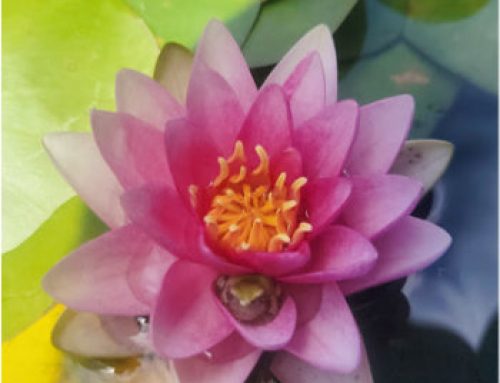
- Evaporation
Evaporation, especially during the warmer seasons can cause your pond to drop approximately 1 inch per week. This is normal and nothing to panic over. Obviously, the weather, time of year and pond size can affect the evaporation rate. The higher the temperature and sun exposure the faster this will happen. Fortunately, this is a slower rate of water loss and can typically be replenished naturally by rainfall or topping off with your own water hose.
- Pond plants
Typically, as long as they haven’t begun to consumer the entire pond, you won’t even notice the water consumption from your aquatic plants. However, this can require regular plant maintenance. If you don’t use underwater baskets to house your plants and they are planted directly into the pond, then they will grow rapidly and can consume large portions of the pond. Especially for smaller ponds if your plants take up the entirety of the pond you will begin to notice a drop-in water level.
- Splash out
A little splashing from a waterfall or fountain is normal, however, if that water is splashing out of the pond or fountain basin you can potentially lose a high rate of water. This can be a common problem in the waterfall that has a high drop. When the water falls from a higher level it can create a higher level of splash out. It may not seem like a lot at first but when you have a small amount consistently splashing all the time you will likely notice a drop in the water level. If the water loss is enough that is bothers you, it’s likely the waterfall will need to be rebuilt or adjusted in someone to prevent so much splashing.
- Plumbing leak
This is typically the least common issue. If your pond has been installed correctly then it’s not likely there will be a plumbing leak. However, what can potentially create one is a frozen plumbing line. In freezing temperatures, if water is still in the plumbing line is can cause a crack somewhere in the line, creating a leak. This can be prevented by letting your pump run during the winter. The moving water prevents the line from freezing. If you do want to shut down the pump for the winter, then you just need to make sure the plumbing line has been drained of water. You can also check the connecting points to make sure the plumbing has been securely fastened during the installation.
- Low pond edge
A low pond edge is often one of the most common causes of water loss. A low edge is when water leaks from the edge of the pond at a low point. This can sometimes happen over time, especially if larger boulders have been placed on the liner of the edge of the pond. Heavy boulders can begin to settle over time, sinking the liner deeper into the ground and creating a low edge where water can escape. It’s typically a simple fix. As long as there is plenty of excess liner along the edge you can pull the low section up and readjust the liner to keep water from escaping. You may need to use rocks or heavier objects to secure the liners level.
- Liner tear
A damaged liner is the last thing you want from your pond, but it does occasionally happen, and it can be fixed. The most challenging part is finding the tear. You can narrow down the potential tear location by performing a “leak test”. We do this by shutting off the pump and allowing the water to drop to a level until it stops. Once it stops you follow the level around the edge of the pond, and you will likely find your tear. It’s unlikely the tear would be at the bottom of your pond but if it is you will find out if all the water has drained from the pond. You can use a pond liner patch or a piece of excess liner and silicone to repair the tear.
If you notice your pond is losing water hopefully these tips can help you locate the problem area. If you prefer to have a professional come out and take a look don’t hesitate to reach out to our team of certified aquascape contractors.

